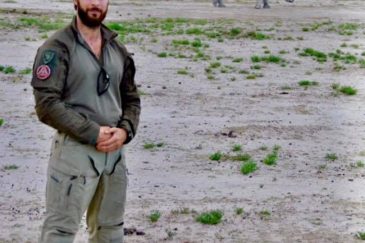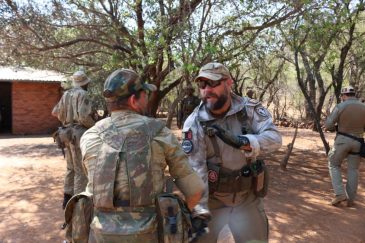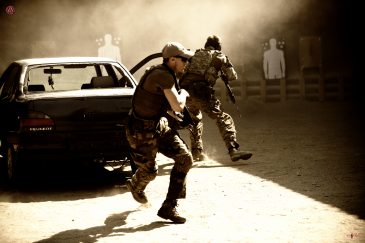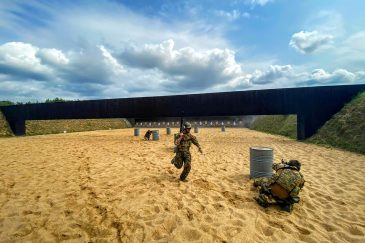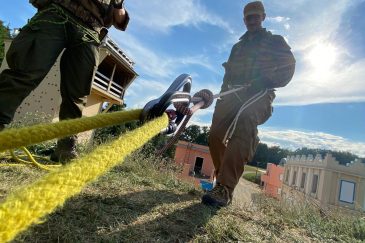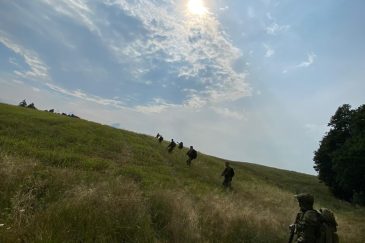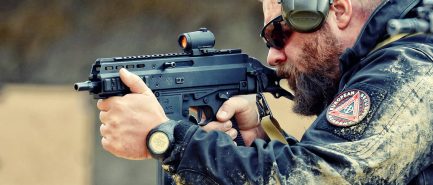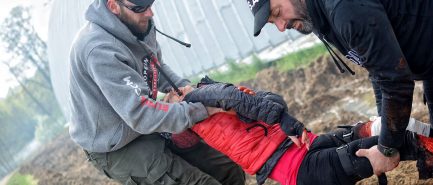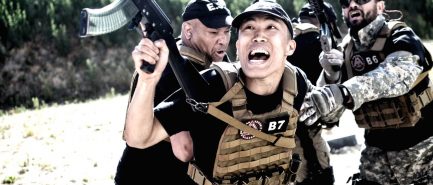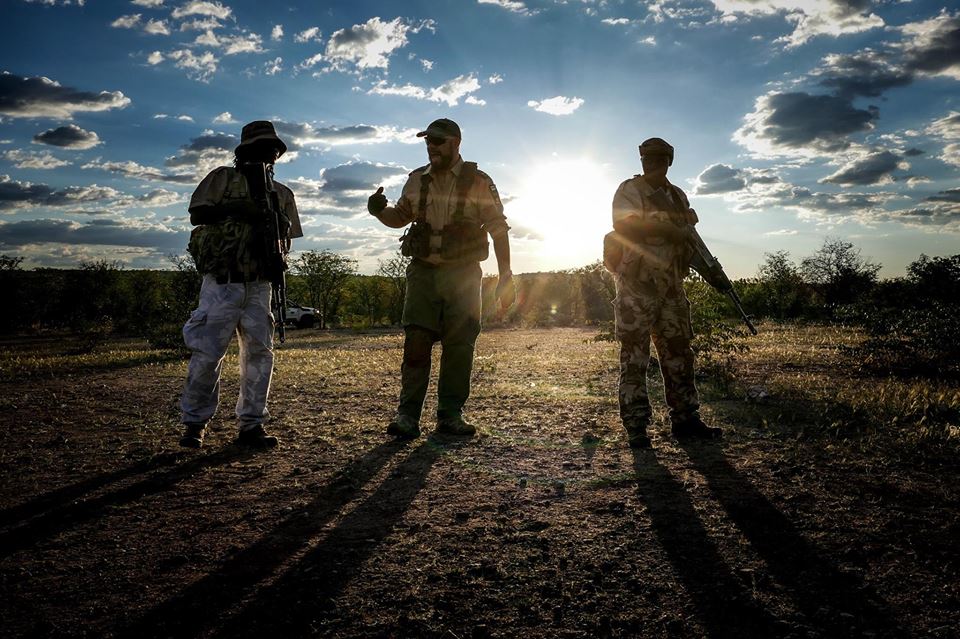
High Risk Protection
Poaching Prevention Operator
PPO Course Syllabus
PPO environmental threat
1 Basic knowledge of savanna, tropical and forest ecology:
Different kind of vegetation patterns and animals caring capacity. Metereological and climate main aspects.
2 The African 10 high profile animals and their basic behavior:
1 Elephant / 2 White and black rhino / 3 Buffaloe / 4 Lion / 5 Leopard / 6 Hyena / 7 Hippo / 8 Crocodile / 9 Giraffe / 10 Ostrich.
3 Dangerous African reptiles:
Colubridae / Elapidae / Viperidae main species and their venoms.
4 Dangerous African arthropods:
Insects main dangerous species / arachnid main dangerous species / miriapodes main dangerous species.
PPO shooting techniques
1. Equipment
Tactical use of webbing / positioning vital and no vital goods / platform sling.
2. Port and stances.
Weapons Safety / How to hold and move with a semi automatic / full automatic rifle-shotgun / advanced movements with rifles – standing, kneeling, prone, scanning, moving / different modes of carrying the rifle depending on the state of alert / muzzle and finger discipline.
3. Weapons and shooting drills:
Weapons Safety / individual shooting drills, involving movement and shooting from different positions, covers, concealments. Reloading, malfunctions, weapon check, safety procedures / tactical readiness, concealment, covert, shooting from concealment and from cover / target prioritization.
4. Patrolling:
5A concept of situation awareness both passive and active / patrolling tecs based on 2 men and 4 men team: column, line, staggered formations, wedge, Y, Echelon
5. Immediate Reaction Tecs and drills:
How to react after a contact is made / offensive, defensive and evasive (envelops) movements / moving as a team of 2 and 4 with live fire.
6. Basics of dynamic shooting :
Balance / the tank concept / preventing funnel vision / step shot and stop shot.
7. Moving forward, backward and sideward:
Aiming while moving / holding aim while moving (balance exercise) / preventing damages from falls.
8. Shooting while moving:
Shooting while moving forward, backward and sideward 1 and 2 targets / the triangle exercise with 1 and 2 targets.
PPO vehicular training
1. Vehicle drills:
QRU and QRF Tactics based on vehicle use / debus and enbus / use of vehicles as a protection.
2. Shooting from a vehicle:
Shooting while moving, shooting from inside and outside the vehicle, casevac, shooting and contact drills.
3. Vehicle search:
Vehicle search tecs / hiding spots / outside, inside, bottomside.
PPO Observation Post
1. OP setting and living:
OP equipment / Creating and living an OP / finding shelters.
2. Camouflage and concealment.
Basics of camouflage / Tecs based on camouflage and concealment / 3D suites.
3. Moving and acquiring an optimal OP.
Stalking and moving in silence / OP optimal spots.
4. OP tactical response.
Shooting from an OP with and without backpack
PPO counter-ambushes
1. Ambush goal: defensive or offensive.
Defining ambush goal and organizing an ambush / contests dictates tactics / defensive tecs / offensive tecs.
2. Near and Far ambushes.
Basics and dynamics of near ambushes / Basics and dynamics of far ambushes
3. Linear, V and L shape ambushes.
Pros and Cons of different ambushes.
4. Counter-ambushes: side, back and front drills.
How to prevent ambushes / patrolling formations that better react to ambushes / immediate reaction drills (defensive, offensive and evasive)
5. Basic communications and Radio Procedures.
Coms and Ops.
Exams
Exercise tests:
1) Run 1000m in less than 6 minutes with a backpack at 15kg load.
2) Perform 30 push-ups (men) - 15 push-ups (women).
3) Successfully complete AK and shotgun shooting tests.
4) Successfully complete the patrol and response tests to the ambushes.
5) Successfully complete the theoretical test.
Skill prerequisits
- Ability to carry out 30 push-ups on the arms;
- Ability to travel 1000 meters in 6 minutes with a backpack weighing 15 kg;
- Ability to use for targeted shooting, assembly and disassembly of the AK47 platform rifle (better if certified);
- Absence of criminal records and excellent health condition;
- Good knowledge of the English language;
Required gear
1. Comfortable clothes for the entire training (pls consult forecast for the period).
2. Tactical vest with magazine pouches and extra pouches (chest rig preferred).
3. Hat and gloves.
4. Metres rope 5 metres + 2 climbing carabineers.
5. 2 point tactical rifle sling.
6. Rack sack 12h/24h.
7. Rain coat.
8. Coffee beans bag made of natural textile.
9. Facial camouflage paintings.
10. Water bottles or canteen.
11. Shooting glasses
12. Shooting ear protection like earmuffs, earplugs
13. A multi-tool.
Topics
- Introduction to Counter-Poaching Operations and Wildlife Conservation
- Wildlife Management
- Environmental Threats
- Human-Based Threats
- Firearms Training
- Self-Defence Combat
- Tracking Skills
- Small Team Tactics and Drills
- Arrest and Restraint Protocols
- Observation Protocols
- Use of Drones in Anti-Poaching
- Vehicle Searching
- Jungle and Forest Survival Skills
- Trade Craft
- Combat/man tracking
Price
2400 EUR
Course info
This course aims to equip trainees with comprehensive knowledge and skills essential for a career in counter-poaching operations, responding to the urgent wildlife crises caused by well-armed and organized poachers. The curriculum focuses on three core aspects: wildlife management, environmental threats, and human-based threats. Trainees will gain both tactical and environmental training, preparing them for daily challenges ranging from extreme weather conditions to encounters with wild animals and poachers.
The course modules are designed to cover a broad array of essential skills. Firearms Training provides instruction on the competent and legal use of various weapons systems, while Self-Defence Combat focuses on techniques for unarmed defense. Additional modules such as Tracking are crucial for both animal and human pursuits. Arrest and Restraint Protocols cover methods for apprehending suspects. The course also incorporates Observation Protocols and drone technology for surveillance and intelligence gathering, serving as a force multiplier during patrols. Practical exercises, conducted on the shooting range and in local forests, familiarize participants with bushcraft techniques and basic survival skills.
Hands-on training also includes Vehicle Searching techniques, designed to be implemented at reserve entry and exit points as well as within the reserve itself. The course is rounded off with a module on Jungle and Forest Survival Skills, which prepares rangers to navigate and survive in harsh wilderness environments. Through this comprehensive course, trainees will not only gain the skills needed to combat poaching but also acquire a holistic understanding of wildlife conservation.
Upcoming courses:
| 21 Jul - 03 Aug | 2400 EUR | Log in |
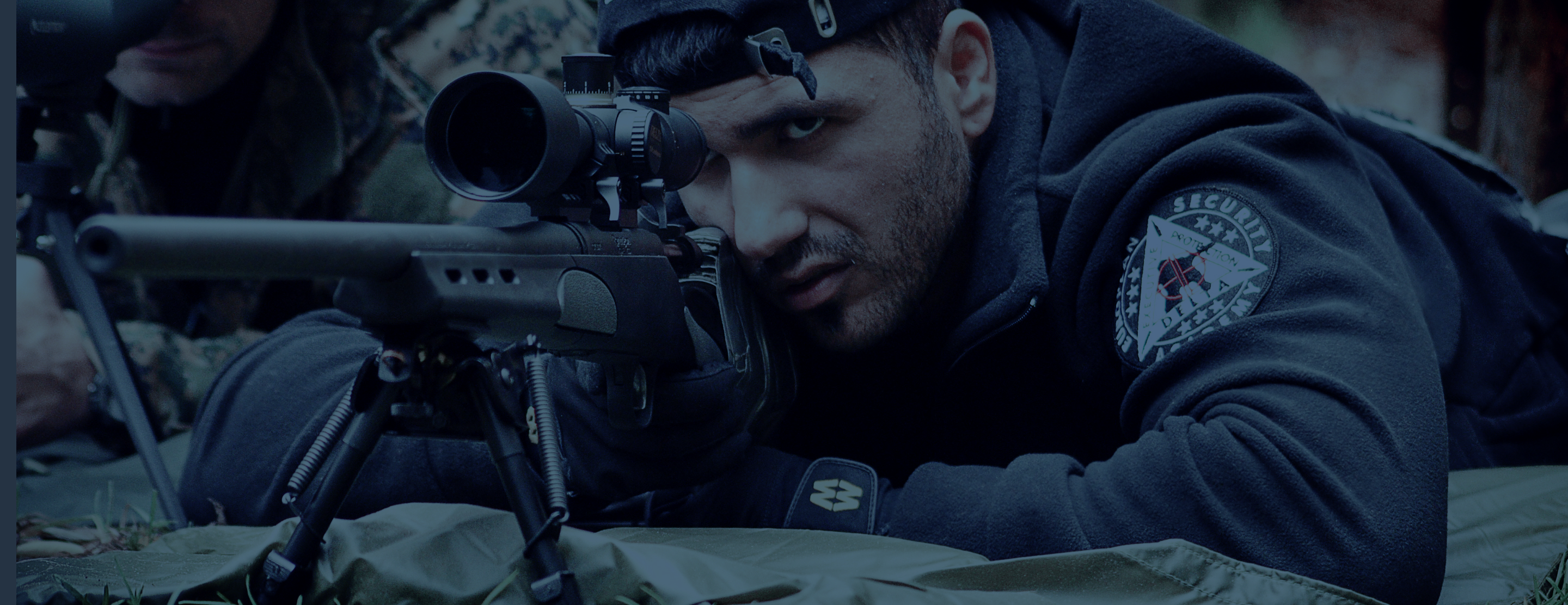
Thinking about developing your skills?
Contact your local ESA representative
and find out more details

